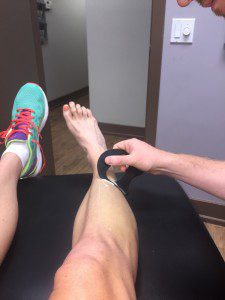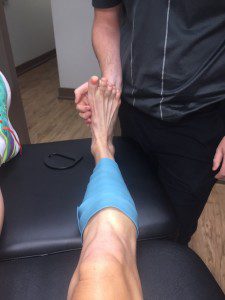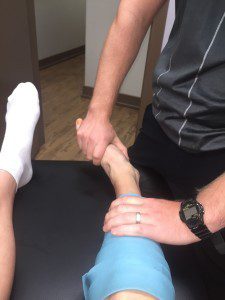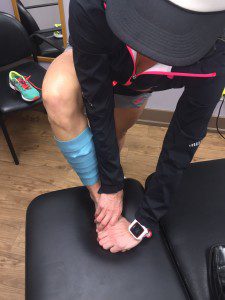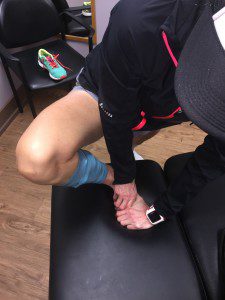Voodoo Flossing: A Treatment Worth Trying
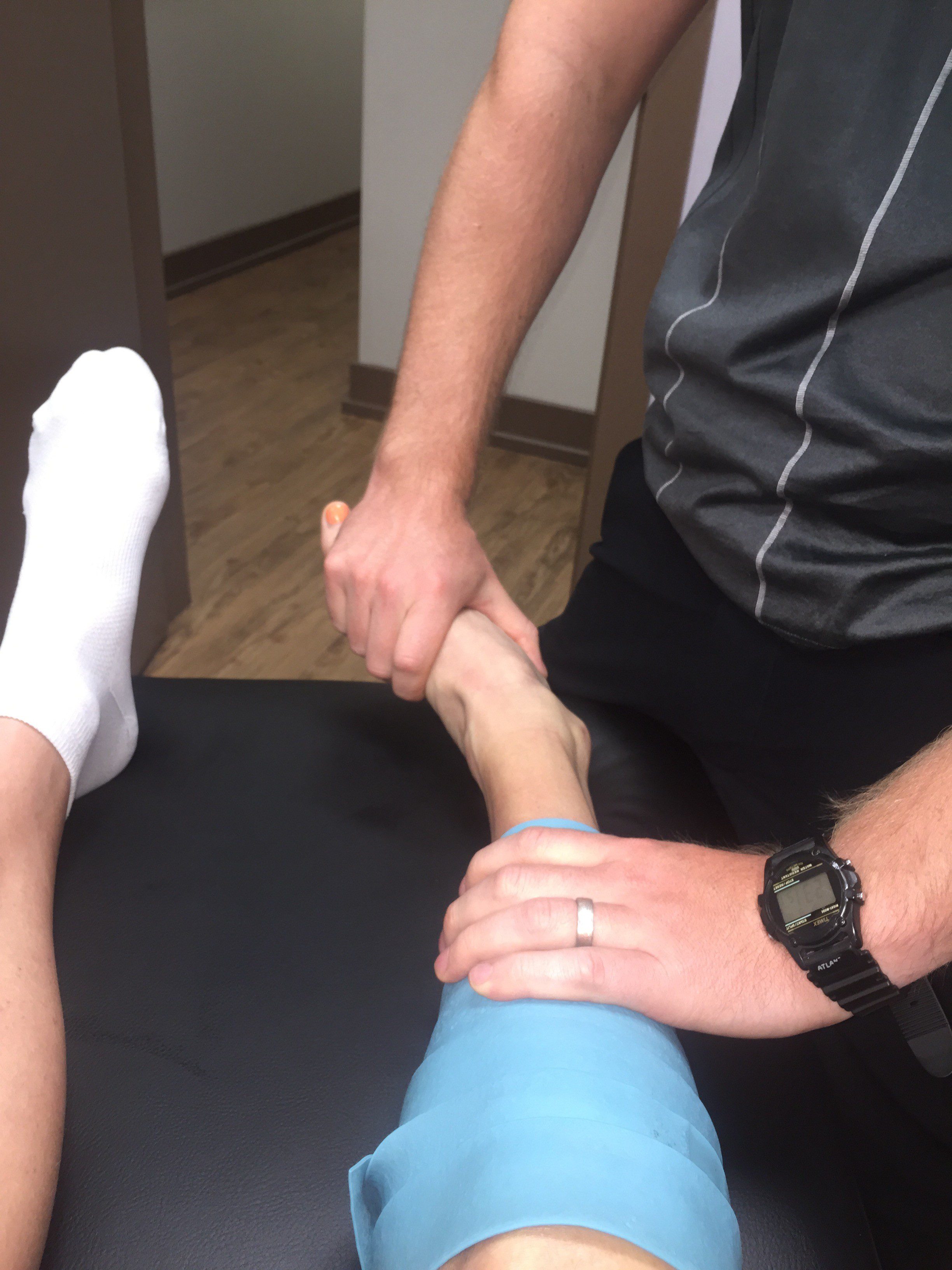
I recently made a trip to Synergy Wellness Center in Victoria, BC to visit physiotherapist Colin Beattie, BKin, MPt, CAFCI. I was curious about a technique he uses known as “Voodoo Flossing.” Voodoo Flossing is a method using neurological modulation to help loosen and relax muscles to allow greater range of motion in the body. When I did some non-scientific Google research, it appears Voodoo Flossing is popular in the Crossfit community. Keeping an open mind about it, I decided to go ahead and see what a Voodoo Floss treatment was all about to decide whether it has merit in treating the injuries common in triathlon.
The actual “Voodoo” is created using a long elastic band which is like a common physiotherapy theraband, only thicker. After some gentle Graston scraping on the area, Beattie wrapped this band tight, but not painfully, around different areas of my leg to show me how it would increase the length in my muscles. Despite my skepticism, I could not deny that immediately my calf and ankle had a huge increase in range of motion. The treatment involved the following steps:
- The treatment started with some easy non-painful Graston with a plastic tool on my shin.
- Next the band was wrapped around my calf/shin tightly but not so tight it was painful. It felt like a tensor bandage might if you sprained your ankle.
With the band in place, first Beattie did some ankle mobilization for me. He moved my foot around and with the band the amount of dorsiflexion that he managed to find was significantly higher than before I had the band on my foot.
- Then it was my turn to get to work. I started some exercises where I moved my ankle/shin through some gentle range of motion stretching. We were looking to floss the common peroneal nerve with something called J-scoop sitting.
Starting in a lunge position on the table I would lunge forward holding my foot in some gentle pronation. Next I would lunge to the side (about 2 o’clock angle) holding my foot in pronation. This challenged the range in my ankle and my shin as my foot was stabilized. I have extremely limited mobility in my right ankle from numerous sprains so I am susceptible to problems in that calf and foot. Using the band really helped release the front of my leg which made a significant difference to all of the muscles connecting to my foot. The increased range in my sub-talar joint allowed my foot to pronate correctly which often doesn’t happen when it gets overly tight.
Lunging forward holding my foot in pronation with the band on my calf.
Lunging with my knee out to the side at two o’clock.
If you are like me you are wondering how this band really works. Beattie explains: “First we need to understand pain. Pain is your car alarm, and just like a car alarm it can go off when someone is breaking into your car but can also go off if someone bumps it. One is helpful and the other is a false alarm. Now our “car alarm” will go off if all of the available information to the brain is determined to be dangerous. The brain prioritizes information (temperature, pressure, movement, and nociception (fancy word for danger)) and if nociception is prioritized as most important you will feel pain. Regardless of any tissue pathology or not. The voodoo bands change that prioritization by inputting new information that is interesting and consequently not a danger signal. This allows for easier, pain free movement due to this process. If this new pain free movement is repeated and reinforced then there is a shift in the processing and prioritization. Think of it as a decrease in the sensitivity of the car alarm and you are then able to participate in activity with greater available movement and less symptoms as the “car alarm” is less likely to go off when it gets bumped and only go off when you actually have a break in (tissue damage).”
Voodoo flossing by itself is not a technique that will repair tissue. Instead, it is used to reinforce good pathways or movement in joints so that healing can occur. This technique would also be great as part of a warm-up as you can increase mobility in muscles without removing elastic tension in the joints. Instead of static stretching, some targeted dynamic stretching using the band can increase range of motion to prepare the body for a better workout. Voodoo flossing only loosens the muscle – it doesn’t stretch ligaments and tendons- so would be a great option for runners who want “stiff springs” in the body.
Athletes suffering from shin splints, plantar fascia problems, turf toe or hamstring tightness might want to try voodoo flossing. Interrupting the cycle of pain and muscle tightness and finding more range might be an effective way to overcome a chronic injury. I was skeptical at first but pleasantly surprised that a cranky shin would relax as quickly as it did when soothed by the Voodoo Flossing. It is worth a try if you are frustrated with a chronic injury and need to try something in addition to the modalities that you are using to target the source of injury. It is important to recognize that this is a tool in the toolbox and should be used in conjunction with interventions designed to help heal tissue. Voodoo Flossing basically creates a more relaxed and aligned body in which healing can occur.
